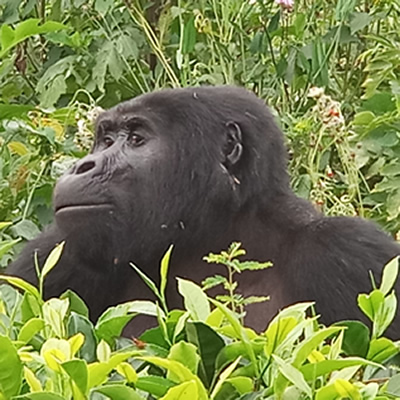Virunga National Park Congo

Mountain Gorillas and Self Driving Tips
January 9, 2018Virunga Mountains
November 15, 2018Virunga National Park Congo - Gorilla trekking Safaris Congo, Rwenzori Mountaineering Service.
Africa’s oldest national park will close its gates to visitors until 2019 following the death of a ranger and the abduction of two British tourists by local rebels this year. Virunga national park in the Democratic Republic of Congo is home to a world-famous population of mountain gorillas but has been hit by rising instability and violence in the country.
Virunga National Park is a 7800 square kilometer World Heritage Site that lies on the eastern border of the Democratic Republic of Congo, where it borders Uganda as well as Rwanda. It is the oldest national park in Africa and the second oldest in the world (after Yellowstone). It is named after the Virunga Mountain (volcanoes) range that lie in the south of the park. the park however is much larger and stretches all the way north to envelop Lake Edward as well as the Rwenzori Mountains.
Virunga Tourism has increased from zero to approximately 2000 in 2010 with numbers growing steadily. New tourist activities are being developed in the park, including the habituation of chimpanzees in the Tongo forest and a high-end lodge conveniently located near the center of the three main tourist attractions in the southern sector, north of Goma and this steady growth has been achieved because of the dedication of the rangers and staff who believe in the value of saving Virunga National Park and its wildlife.
The nightly glow from the lava lake within the Nyiragongo volcano can be seen from miles away Virunga National Park is unrivalled in its diversity of landscapes and ecosystems. The parks bounderies envelop low land tropical forest in the north; high alpine forest in the Rwenzori Mountains; riverine forest around the Semliki and Rutshuru rivers; swamplands around lake Edward, savannah north and south of the lake; montane forest on the hills of the Virunga volcanoes and old (and new) lava flow landscapes.
Climbing Rwenzori Mountains In Virunga National Park
Virunga National Park also offers spectacular trekking and climbing trips to the Rwenzori mountains in the north of the park. Known also as the “Mountains of the Moon,” the Rwenzoris reach a height of 5,109 m (16,761 ft) and contain the largest glaciers left on the African continent. Those who trek and climb in the Rwenzoris will experience a stunning variety of landscapes, including bamboo and giant fern forests, alpine meadows and lakes, and snow-capped peaks. The flora and fauna of the Rwenzoris is equally diverse. Forest elephant, Okapi, chimpanzees, and numerous bird species make the Rwenzoris their home.
The best weather in the Rwenzoris usually happens from January through mid-March and June to late August. There are four huts in the Rwenzoris: Kalonge (2138 m/7014 ft.), Mahangu (3310 m/10,859 ft.), Kiondo (4200 m/13,779 ft.), and Moraine (4350 m/14,271 ft.).


